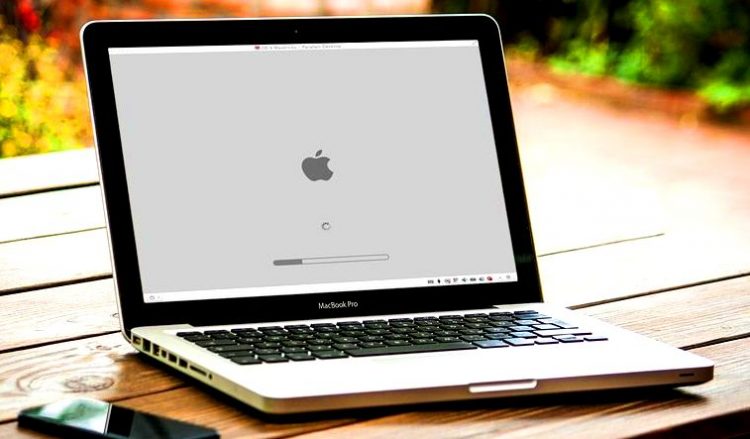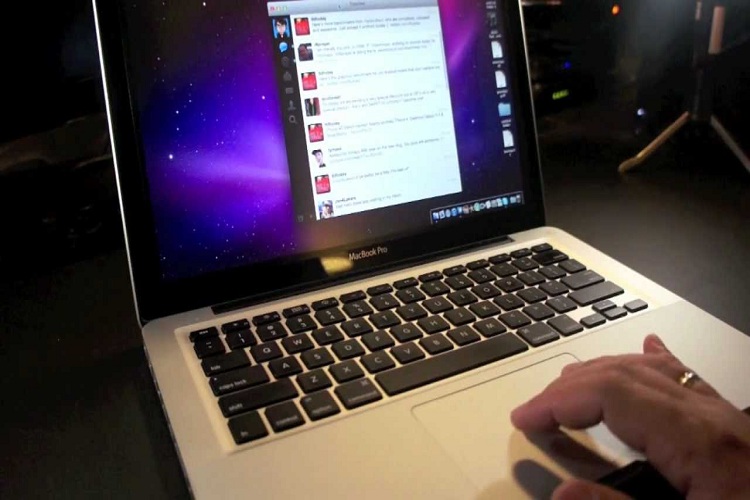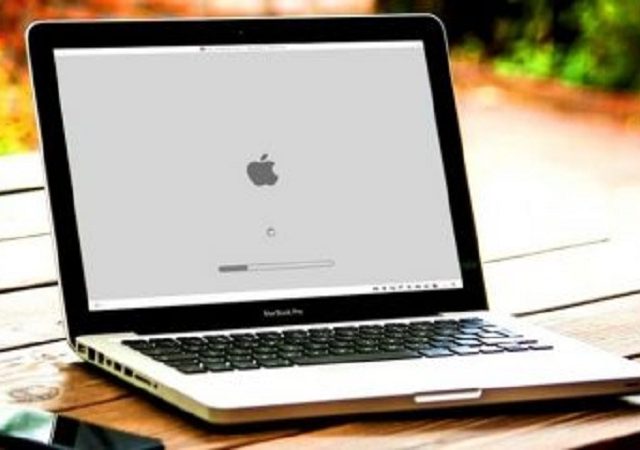How to fix macOS could not be installed on your computer ?
Updating your MacBook or any Mac computer is important for safety and an enhanced experience. However, you might encounter an error when your Mac device tries to install the downloaded macOS version: macOS could not be installed on your computer.
Don’t worry as this is not the end of the world. Now, you can troubleshoot the error with proven solutions as suggested by MacBook Repair Dubai specialists. Let’s check out the reasons for this specific error and how you can tackle it.
Reasons macOS Could Not Be Installed on Your Computer
As reported by MacBook Repair Dubai professionals, a macOS installation can go wrong due to many causes. Additionally, the specialists give a heads-up that you can pinpoint the reason along with the error. Your Mac computer will specify the exact cause so you can eradicate the underlying issue.

Here are some most common causes why macOS could not be installed on your computer, as shared by a MacBook repair in Dubai:
- A specific path (/System/Installation/Packages/OSInstall.mpkg) seems to be damaged or missing.
- On the other hand, your Mac doesn’t have sufficient storage space to install the macOS update.
- There’s some kind of problem with the startup disk of your Mac computer.
- The macOS installer file is corrupted.
- Otherwise, the hardware installed on your Mac might be incompatible with the software update.
- The software might be interfering with the macOS update.
How to Fix ‘macOS Could Not Be Installed on Your Computer’?
According to Macbook Repair Services Dubai specialists, not every macOS upgrade or update is meant to be suitable for your computer. Before you try troubleshooting the update error on your macOS computer, check if the upgrade or update version is compatible with your Mac.
Apple always lists all the compatible and incompatible Mac computers online. Hence, you can check your Mac build from the Apple menu → About This Mac. Note your Mac version and examine if Apple has launched the macOS version in question for your computer as well.
If Apple hasn’t included your Mac variant in the list then the upgrade or update won’t be compatible with your device. Or else, you can try the following solutions below to install the macOS update that your computer has downloaded.
1. Rectify the Date and Time
The macOS installation error can pop up if there’s a misconfiguration in the date and time settings. That’s why a MacBook repair service near me recommends setting the right date and time on your Mac. Here’s how you can proceed with the fix:
- Hit the Apple logo icon from the top-left corner of the screen.
- Then, opt for System Preferences or System Settings.
- After that, click on the General option from the side panel.
- Opt for Date & Time.
- Now, examine if you need to change the date and time. Better, you should set the date and time to automatic settings to avoid such consequences.
Now, you can resume the installation of the macOS update or upgrade and see if it works.
2. Restart Your Computer
Temporary software glitches, bugs, etc. can interfere with installing the macOS update or upgrade. The quickest solution is to restart your Mac and check if you can resume the installation.
Simply, head towards the Apple menu and click on it. Choose Restart from the dropdown menu. If you can’t move the cursor to the Appl menu as your Mac is unresponsive, you can press and hold the Power button. Your Mac will turn off within a few seconds.
Wait for a while and turn on the Mac computer. However, a MacBook repair service in Dubai reminds us that users should not restart their Macs while the update is in progress. Otherwise, restart your Mac and try to install the update.
3. Make Sufficient Space for the Update on Your Mac
In general, any macOS update is about 4 to 5 GB in terms of size. However, the size can be more or less depending on the system requirements. As confirmed by a MacBook repair service in Dubai, your computer should have at least 25 GB of free hard disk space for a smooth installation.
The macOS installer requires this much extra space to unpack files and folders. If your computer lacks that much additional space then the installer can’t proceed with the installation. As a result, you will see ‘macOS could not be installed on your computer’.
First, check how much free space is available on your Mac in the following steps:
- Click on the Apple icon from the upper left corner.
- Next, navigate to ’About This Mac’ and click on it.
- After that, click Storage to see how much space is left on the hard drive of your Mac.
By the way, how can you free up some space on your Mac drive? Move unnecessary files to Trash. On the other hand, you can move all the large files to a physical external hard drive. Otherwise, you can upload them to a trusted cloud storage service.
Afterwards, you can proceed with installing the macOS update or upgrade.
4. Delete the Installer and Get a New Copy of it
As verified by the MacBook repair services in Dubai, a corrupted macOS installer can ruin the installation. However, you can rectify the error by deleting the installer and getting a fresh copy. MacBook repair Dubai experts share how you can get rid of the defective macOS installer:
- Open Finder and go to the Download folder.
- Now, locate the installer file.
- Select the file and drag it to Trash.
After deleting the installer, you should navigate to the App Store and launch it. Search for the macOS version and click the Get option once the update appears. Finally, try to install the macOS update again.
5. Reset Your Mac’s NVRAM
The NVRAM component of your Mac computer saves data even after your device turns off or restarts. So, NVRAM is different from typical RAM as it flushes away its memory as soon as the computer shuts down. Resetting the NVRAM hardly impacts your system but you can try the fix and see if anything happens.
For Apple silicon Macs, the manufacturer hasn’t declared any clear steps for resetting the NVRAM component. However, MacBook repair services in Dubai claim that shutting down your Mac and restarting it after 30 seconds can reset NVRAM.
On the other hand, here’s how you can reset NVRAM on your Intel-based Mac computer:
- Restart your Mac.
- While your Mac restarts, press and hold the following keys from the keyboard:
- Command
- Option (Alt)
- P
- R
- Don’t release the above-mentioned keys until you can listen to a startup chime.
- Wait until you get to hear the startup chime twice.
Typically, it will take longer to hear a startup chime twice. However, you can be sure of the NVRAM reset if it’s done. Once your Mac opens, try to download and install the macOS update or upgrade and check if it works.
6. Update Your Mac Operating System in Safe Mode
MacBook Repair Dubai professionals are afraid that specific software can interfere with the macOS update installation on your computer. That’s why macOS could not be installed on your computer.
Try to boot your device into safe mode, first. Thus, you will deactivate all the startup items and launch agents. However, your computer will run on bare minimum requirements. Here’s how you can make an Apple silicon Mac enter the safe mode:
- Turn off your computer and wait for 10 seconds or so.
- After that, hold the Power button until startup options appear.
- Then, choose a startup disk.
- Keep the Shift key pressed and click on ‘Continue in Safe Mode’.
- Now, release the shift key.
If you own an Intel-based Mac, here’s what you can follow:
- Shut your Mac down and wait at least 10 seconds.
- After that, restart the device and keep the Shift key pressed.
- When the login window appears, you can release the Shift key.
Safe Mode should have fixed the issues with launch agents, daemons, etc. interfering with the macOS update or upgrade. Try to install the macOS version now and check if it solves the problem.
7. Execute First Aid on the Startup Disk
Do you still see the ‘macOS could not be installed on your computer’ message? A MacBook repair service near me points out that it can be a disk fragmentation or permission error on the startup disk. However, you can fix such errors with the Disk Utility app, which comes in-built with the macOS.
Here’s what you need to go through for a First Aid on Disk Utility:
- Navigate to the Applications folder on your Mac computer.
- Next, click on Utilities.
- Choose the startup disk from the side panel. Typically, it’s Macintosh HD.
- Now, click the First Aid option followed by Run.
Soon, the Disk Utility will scan your Mac computer’s startup disk for errors. Apart from detecting errors, the utility can even fix those errors. Hence, you can try installing the macOS upgrade once the repair is done.
8. Opt for Recovery Mode
According to a MacBook repair service in Dubai, you can get a permanent solution to the problematic installation of macOS with the help of Recovery Mode. Well, Recover Mode allows you to reinstall the entire operating system instead of just installing the upgrade.
However, this particular solution applies to when your Mac has a corrupted operating system. Here’s how you can boot into macOS Recovery on a Mac with Intel processor:
- Click on the Apple logo icon and then, select Restart.
- Now, immediately press and hold the keyboard shortcut Command + R.
- Don’t let go of those keys until you hear the startup chime from your Mac or the Apple logo appears on the screen.
On the other hand, you can boot into Recovery Mode this way if you own an Apple silicon Mac computer:
- Press and hold your Mac’s Power button while starting up.
- Make sure you don’t release the Power button until startup options appear.
- Afterwards, click the gear icon or Options and hit the Continue button.
- The window may ask the user to choose a user and input the respective administrator password. Now, go through the on-screen guidelines and opt for the Next option once you select a particular action.
You will get 2 options when the macOS Utilities window opens up. Either you can reinstall macOS or restore your computer from a Time Machine backup in case you have a compatible backup. Select the right option and follow the on-screen guidelines.
In Conclusion…
Hopefully, you have eradicated the ‘macOS could not be installed on your computer’ issue. If the error persists, make sure you contact a MacBook repair in Dubai if your Mac computer doesn’t respond to the upgrade installation at any cost.



